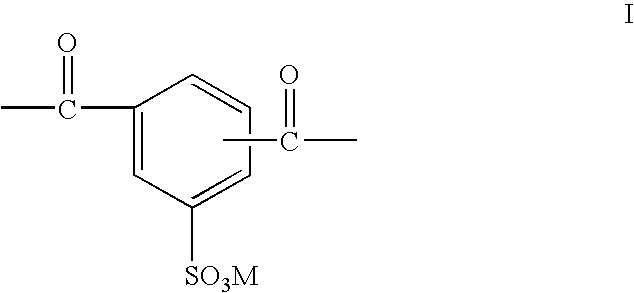Extruded open-celled ink-receiving layer comprising hydrophilic polymer for use in inkjet recording
a hydrophilic polymer and inkjet recording technology, applied in the direction of printing, coating, thermal imaging, etc., can solve the problems of insufficient thermal resistance of many substrates, difficult to achieve simultaneous inkjet recording media requirements, and many substrates, etc., to achieve fast ink dry time, improve inkjet recording properties, and good ozone fade performance
- Summary
- Abstract
- Description
- Claims
- Application Information
AI Technical Summary
Benefits of technology
Problems solved by technology
Method used
Image
Examples
example 1
[0156] A two-layered cast film is prepared in the following manner. The materials used in the preparation are:
[0157] (1) a PLA resin (NATUREWORKS 2002-D by Cargill-Dow) for the base layer; and (2) a compounded mix consisting of 32% by weight of a blend of two hydrophilic polymers and 68% by weight of Barium Sulfate (BLANC FIXE XR-HN from Sachtleben) with a mean particle size of 0.8 μm for the layer to be voided.
[0158] The two hydrophilic polymers were a polyether block amide (PEBAX 1657 by ATOFINA) and a Diglycol / CHDM / Isophthalate / SIP Copolymer (AQ 55S by Eastman Chemical), wherein “SIP” refers to sodiosulfo isophthalate monomer and “CHDM” is defined above. The two polymers were blended at a ratio of 35% wt and 65% wt, respectively.
[0159] The barium sulfate was compounded with the polymer blend through mixing in a counter-rotating twin screw extruder attached to a pelletizing die. Then both the PLA and the compounded resins were dried at 52° C. and fed by two plasticating screw e...
example 2
[0160] A two-layered cast film is prepared in the following manner. The materials used in the preparation are:
[0161] (1) a PLA resin (NATUREWORKS 2002-D by Cargill-Dow) for the base layer; and (2) a compounded mix consisting of 32% by weight of a blend of two hydrophilic polymers and 68% by weight of barium sulfate (BLANC FIXE XR-HN from Sachtleben) with a mean particle size of 0.8 μm for the layer to be voided.
[0162] The two hydrophilic polymers were a polyether block amide (PEBAX 1657 by ATOFINA) and a Diglycol / CHDM / Isophthalate / SIP Copolymer (AQ 55S by Eastman Chemical). Unlike that of example 1, in this example the two polymers were blended at a ratio of 60% wt and 40% wt, respectively.
[0163] The Barium Sulfate was compounded with the polymer blend through mixing in a counter-rotating twin-screw extruder attached to a pelletizing die. Then both the PLA and the compounded resins were dried at 52° C. and fed by two plasticating screw extruders into a co-extrusion die manifold t...
PUM
| Property | Measurement | Unit |
|---|---|---|
| Tg | aaaaa | aaaaa |
| Tg | aaaaa | aaaaa |
| Tg | aaaaa | aaaaa |
Abstract
Description
Claims
Application Information
 Login to View More
Login to View More - R&D
- Intellectual Property
- Life Sciences
- Materials
- Tech Scout
- Unparalleled Data Quality
- Higher Quality Content
- 60% Fewer Hallucinations
Browse by: Latest US Patents, China's latest patents, Technical Efficacy Thesaurus, Application Domain, Technology Topic, Popular Technical Reports.
© 2025 PatSnap. All rights reserved.Legal|Privacy policy|Modern Slavery Act Transparency Statement|Sitemap|About US| Contact US: help@patsnap.com



